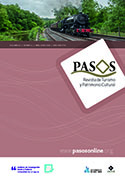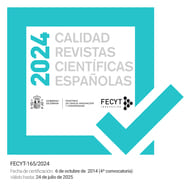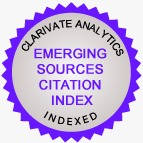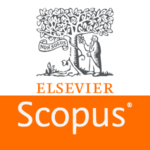Equilibrio entre turismo y medio ambiente: medición de actitudes implícitas y explícitas de los turistas hacia los mensajes visuales de conservación. El artículo genuino
DOI:
https://doi.org/10.25145/j.pasos.2024.22.015Palabras clave:
Implicit attitudes, Conservation messages, Implicit Association Test, Conservation attitudes, Persuasive messages, Tourism and conservationResumen
Los mensajes visuales son ampliamente usados para influir positivamente en las actitudes conservacionistas de los visitantes de destinos turísticos, estos suelen ser de carácter persuasivo o prohibitivo. De acuerdo con la literatura las actitudes se clasifican como explicitas (conscientes) o implícitas (subconscientes) y pueden existir diferencias entre ellas hacia un mismo objeto de actitud. El trabajo realizado presenta el análisis de dichas actitudes hacia mensajes visuales prohibitivos y persuasivos enfocados en la correcta disposición de la basura en un atractivo turístico. Se aplicó un cuestionario estructurado como medición explicita y el Test de Asociación Implícita para la medición implícita en dos destinos de sol y playa del Caribe Mexicano. Después de las pruebas realizadas se establece que ambos mensajes (persuasivo y prohibitivo) son efectivos a nivel explicito; sin embargo, a nivel implícito el mensaje persuasivo produce actitudes más favorables, siendo una mejor oportunidad para influir positivamente en actitudes conservacionistas.
Descargas
Datos de publicación
Perfil evaluadores/as N/D
Declaraciones de autoría
- Sociedad académica
- PASOS. Revista de Turismo y Patrimonio Cultural
- Editorial
- Instituto Universitario de Investigación Social y Turismo. Universidad de La Laguna (España) - Instituto Universitario da Maia ISMAI (Portugal)
Citas
Ardusso, M., Forero-López, A. D., Buzzi, N. S., Spetter, C. V., & Fernández-Severini, M. D. (2021). COVID-19 pandemic repercussions on plastic and antiviral polymeric textile causing pollution on beaches and coasts of South America. The Science of the total environment, 763, 144365. https://doi.org/10.1016/j.scitotenv.2020.144365
Ajzen, I. (1991), “The theory of planned behaviour”, Organizational Behavior and Human Decision Process, Vol. 50 No. 2, pp. 179-211.
Ajzen, I. (1992), “Persuasive Communication Theory in social Psychology: A Historical Perspective”, in Manfredo, M. (Ed.), Influencing Human Behavior, Sagamore Publishing, Champaign, IL, pp. 1-27.
Bal, W. and Czalczynska-Podolska, M. (2019), “Landscape and Cultural Aspects of the Coastal Area of Western Pomerania as Factors of Development of Maritime and Nautical Tourism. Identification and Definition of Conditions”, in IOP Conference Series: Materials Science and Engineering, 2019.
Ballantyne, R. and Hughes, K. (2003), “Measure Twice , Cut Once : Developing a Research- Based Interpretive Signs Checklist”, Australian Journal of Environmental Education Vol. 19, pp. 15–25.
Ballantyne, R. and Hughes, K. (2006), “Using front-end and formative evaluation to design and test persuasive bird feeding warning signs”, Tourism Management, Vol. 27, pp. 35–246.
Ballantyne, R., Packer, J. and Falk, J. (2011), “Visitors’ learning for environmental sustainability: Testing short- and long-term impacts of wildlife tourism experiences using structural equation modelling”, Tourism Management, Vol. 32, No. 6, pp. 1243–1252.
Ballantyne, R., Packer, J. and Hughes, K. (2009), “Tourists’ support for conservation messages and sustainable management practices in wildlife tourism experiences”, Tourism Management, Vol. 30, No. 5, pp. 658–664.
Ballantyne, R., Packer, J., Hughes, K. and Dierking, L. (2007), “Conservation learning in wildlife tourism settings: lessons from research in zoos and aquariums”, Environmental Education Research, Vol. 13, No. 3, pp. 367–383 .
Bargh, J. and Morsella, E. (2010), “Unconscious behavioral guidance systems” in Agnew, C., Carlston, D., Graziano, W., Kelly, J. y Carlston, D. (Eds.), Then a miracle occurs: Focusing on behavior in social psychological theory and research Oxford University Press, USA, pp. 89–118.
Briñol, P., Horcajo, J., Becerra, A. and Falces, C. (2003), “Equilibrio cognitivo implícito”, Psicothema, Vol. 15, pp. 375–380.
Briñol, P., Petty, R. and Wheeler, S. (2006), “Discrepancies between explicit and implicit self-concepts: Consequences for information processing”, Journal of Personality and Social Psychology, Vol. 91, No.1, pp. 154–170.
Brown, T., Ham, S. and Hughes, M. (2010), “Picking up litter: an application of theory-based communication to influence tourist behaviour in protected areas”, Journal of Sustainable Tourism, Vol. 18, No. 7, pp. 879–900.
Bruner, G. (2009), A compilation of Multi‐Item Measures for Consumer Behavior and Advertising Research, GCBII Productions, Illinois.
Cabrera, I., Alvarado-Herrera, A. and Cavazos-Arroyo, J. (2014), “Implicit and explicit attitudes toward sustainable and non-sustainable Tourism Destination Images”, in Bigné, E. (Ed.), Paradigm Shifts and Interactions, Universitat de València, Spain.
Castro, R. (2009), “Retos y oportunidades para una nueva educación ambiental” in Consejería de Medio Ambiente (Ed.), VI Congreso Iberoamericano de Educación Ambiental. Buenos Aires, Junta de Andalucía, Argentina.
Cronbach, L. (1951), “Coefficient alpha and the internal structure of tests”, Psychometrika, Vol. 16, No. 3, pp. 297–334.
Dolnicar, S. (2020). Designing for more environmentally friendly tourism. Annals of Tourism Research, 84, 102933.
Gawronski, B. and Bodenhausen, G. (2006), “Associative and propositional processes in evaluation: an integrative review of implicit and explicit attitude change”, Psychological Bulletin, Vol. 132, No. 5, pp. 692–731.
Gedik, S., & Mugan-Ertugral, S. (2019). The effects of marine tourism on water pollution. Fresenius Environ. Bull, 28, 863-866.
Greenwald, A. (1968), “Cognitive learning, cognitive response to persuasion, and attitude change”, Psychological Foundations of Attitudes, pp. 147–170.
Greenwald, A., Banaji, M., Rudman, L., Farnham, S., Nosek, B. and Mellott, D. (2002), “A unified theory of implicit attitudes, stereotypes, self-esteem, and self-concept”, Psychological Review, Vol. 109, No. 1, pp. 3–25.
Greenwald, A. and Banaji, M. (1995), “Implicit social cognition: attitudes, self-esteem, and stereotypes”, Psychological Review, Vol. 102, No. 1, pp. 4–27.
Ham, S., Brown, T., Curtis, J., Weiler, B., Hughes, M. and Poll, M. (2009), Promoting Persuasion in Protected Areas - A Guide For Managers Who Want To Use Strategic Communication to Influence Visitor Behaviour, CRC for Sustainable Tourism Pty Ltd, Australia.
Hansmann, R. and Steimer, N. (2015), “Linking an Integrative Behavior Model to Elements of Environmental Campaigns: An Analysis of Face-to-Face Communication and Posters against Littering”, Sustainability, Vol. 7, No. 6, pp. 6937–6956.
Hagen, R. L. (1997), “In Praise of the Null Hypothesis Statistical Test”, American Psychologist, Vol. 52, No. 1, pp 15-24.
Hughes, M., Ham, S. and Brown, T. (2009), “Influencing Park Visitor Behavior: A Belief-based Approach”, Journal of Park and Recreation Administration, Vol. 27, No. 4, pp. 38–53.
Jacobs, M. and Harms, M. (2014), “Influence of interpretation on conservation intentions of whale tourists”, Tourism Management, Vol. 42, pp. 123–131.
Keizer, K., Lindenberg, S. and Steg, L. (2011), “The reversal effect of prohibition signs”, Group Processes and Intergroup Relations, Vol.14, No. 5, pp. 681–688.
Mancini, M., Evans, M., Iha, K., Danelutti, C. and Galli, A. (2018), “Assessing the ecological footprint of ecotourism packages: A methodological proposition” Resources, Vol. 7, No. 2, pp.38.
Massey, F. (1951), “The Kolmogorov-Smirnov Test for Goodness of Fit” American Statistical Association, Vol. 46, No. 253, pp. 68–78.
McNamara, K. and Prideaux, B. (2010), “Reading, learning and enacting: interpretation at visitor sites in the Wet Tropics rainforest of Australia”, Environmental Education Research, Vol.16, No. 2, pp. 173–188.
Meade, A. (2009), “FreeIAT: An Open-Source Program to Administer the Implicit Association Test”, Applied Psychological Measurement , Vol. 33, No. 8, pp. 643–643.
Murray, L., Magurno, A., Glover, B. and Wogalter, M. (1998), “Prohibitive pictorials: Evaluations of different circle-slash negation symbols”, International Journal of Industrial Ergonomics, Vol. 22, No. 6, pp. 473–482.
Newsome, D., Moore, S. and Dowling, R. (2004), Natural Area Tourism Ecology, Impacts and Management, Channel View Publications, Toronto.
Nosek, B., Greenwald, A. and Banaji, M. (2005), “Understanding and using the Implicit Association Test: II. Method variables and construct validity”, Personality and Social Psychology Bulletin, Vol. 31, No.2, pp. 166–180.
Patrício Silva, A. L., Prata, J. C., Walker, T. R., Duarte, A. C., Ouyang, W., Barcelò, D., & Rocha-Santos, T. (2021). Increased plastic pollution due to COVID-19 pandemic: Challenges and recommendations. Chemical engineering journal (Lausanne, Switzerland : 1996), 405, 126683. https://doi.org/10.1016/j.cej.2020.126683
Perrault, E., Silk, K., Sheff, S., Ahn, J., Hoffman, A. and Totzkay, D. (2015), “Testing the Identifiable Victim Effect With Both Animal and Human Victims in Anti-Littering Messages”, Communication Research Reports, Vol. 32, No. 4, pp. 294–303.
Petty, R. and Briñol. P. (2010), “Attitude change”, in Advanced social psychology: The state of the science, Baumeister, R. and Finkel, E. (Eds.), Oxford University Press, pp. 217–259.
Petty, R., Wegener, D. and Fabrigar, L. (1997), “Attitude and Attitude Change”, Annual Review of Psychology, Vol. 48, pp. 609–647.
Petty, R. and Cacioppo, J. (1986), “The elaboration likelihood model of persuasion” in Advances in experimental social psychology, Berkowitz, L. (Ed.), Academic Press, New York.
Powell, R. and Ham, S. (2008), “Can Ecotourism Interpretation Really Lead to Pro-Conservation Knowledge, Attitudes and Behaviour? Evidence from the Galapagos Islands”, Journal of Sustainable Tourism, Vol. 16, No. 4, pp. 467.
Reardon, K. (1991), Persuasion in practice, Sage Publications, London.
Rodríguez-Rodríguez, D. (2012), “Littering in protected areas: a conservation and management challenge – a case study from the Autonomous Region of Madrid, Spain”, Journal of Sustainable Tourism, Vol. 20, No. 7, pp. 1011–1024.
Román-Nuñez, Y. and Cuesta-Moreno, O. (2016). “Comunicación y conservación ambiental : avances y retos en Hispanoamérica”, Revista Latina de Comunicación Social, Vol. 71, pp. 15–39.
Schultz, P., Bator, R., Large, L., Bruni, C. and Tabanico, J. (2013), “Littering in Context: Personal and Environmental Predictors of Littering Behavior”, Environment and Behavior, Vol. 45, No. 1, pp. 35–59.
Spalding, M., Burke, L., & Fyall, A. (2021). Covid-19: Implications for nature and tourism. Anatolia, 32(1), 126-127.
Spenceley, A., McCool, S., Newsome, D., Báez, A., Barborak, J. R., Blye, C. J., ... & Zschiegner, A. K. (2021). Tourism in protected and conserved areas amid the COVID-19 pandemic. Parks, (27), 103-118.
SEDETUR (Secretaría de Turismo) (2023), Indicadores Turísticos Enero-Abril 2022 en Quintana Roo.
Wang, S., Tong, Z., Li, Y., Yu, X., & Sun, Y. (2020). Implicit attitudes toward wildlife products. Global Ecology and Conservation, 24, e01358.
Williams, A., Rangel-Buitrago, N., Anfuso, G., Cervantes, O. and Botero, C. (2016), “ Litter impacts on scenery and tourism on the Colombian north Caribbean coast”, Tourism Management, Vol. 55, pp. 209-224.
Winter, P. (2006), “The impact of normative message types on off-trail hiking”, Journal of Interpretation Research, Vol. 11, pp. 35–52.
Winter, P., Sagarin, B., Rhoads, K., Barrett, D. and Cialdini, R. (2000), “Choosing to encourage or discourage: Perceived effectiveness of prescriptive versus proscriptive messages”, Environmental Management, Vol. 26, No. 6, pp. 589–594.
Winter, P., Cialdini, R., Bator, R., Rhoads, K. and Sagarin, B. (1998), “An analysis of normative messages in signs at recreation settings”, Journal of Interpretation Research, Vol. 3, No. 1, pp. 39–47.
Xu, H., Cui, Q., Ballantyne, R. and Packer, J. (2013) “Effective environmental interpretation at Chinese natural attractions: the need for an aesthetic approach”, Journal of Sustainable Tourism, Vol. 21, No. 1, pp. 117–133.
Zhensikbayeva, N., Saparov, K., Chlachula, J., Yegorina, A., Uruzbayeva, N. and Wendt, J. (2018), “Natural potential for tourism development in Southern Altai (Kazakhstan)”, GeoJournal of Tourism and Geosites, Vol. 21, No. 1, pp. 200-212.
Descargas
Publicado
Cómo citar
Número
Sección
Licencia
Derechos de autor 2023 Alejandro Alvarado-Herrera

Esta obra está bajo una licencia internacional Creative Commons Atribución-NoComercial-SinDerivadas 4.0.
Confirmo que el trabajo es original (de mi/nuestra autoría), y que no se someterá a otras revistas o publicaciones hasta la resolución definitiva del proceso de revisión en PASOS, RTPC.
Autorizo la publicación de mi trabajo por PASOS, RTPC de acceso abierto y gratuito en cualquiera de los formatos que estime oportunos, por un plazo indeterminado y a título de colaboración no remunerada.
Asimismo, el/los autor/es entiende/n que el trabajo publicado podrá vincularse o depositarse en cualquier servidor o ser incluido en otras publicaciones (republicación), siempre y cuando el nuevo lugar y/o la nueva edición referencie la publicación original y reconozca la autoría y la propiedad del copyright de las publicaciones de PASOS RTPC.
Los/as autores/as entienden que se realizará una comprobación de plagio-autoplagio, pudiendo retirarse el artículo en cualquier momento del flujo editorial










